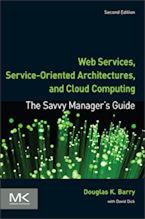Application Server Architectures
This section provides basic architectures for providing persistence with the J2EE application server platform. The J2EE platform requires a database for the storage of business data. This database is accessible through the JDBC, SQLJ, or JDO APIs. Also, the database is accessible from web components, enterprise beans, and application client components. For more information on the J2EE platform, see the Application Server Definition.
Here are some basic architectures for accessing databases:
- Using JDBC with Application Servers
- Using SQLJ with Application Servers
- Using JDO with Application Servers
- Using EJB Accelerators with Application Servers
Context for Application Server Architectures
Related Articles for Application Server Architectures
Author
Douglas K Barry
Principal
You may use this material for your work or classes. Reprint Policy. Be sure to check the menu at the left for other articles available on this site.
The Savvy Manager's Guide
Douglas K Barry is also the author of a book that explains Web Services, service-oriented architecture, and Cloud Computing in an easy-to-understand, non-technical manner.
Web Services, Service-Oriented Architectures, and Cloud Computing: The Savvy Manager's Guide (Second Edition)
by Douglas K Barry with David Dick
This is a guide for the savvy manager who wants to capitalize on the wave of change that is occurring with Web Services, service-oriented architecture, and—more recently—Cloud Computing. The changes wrought by these technologies will require both a basic grasp of the technologies and an effective way to deal with how these changes will affect the people who build and use the systems in our organizations. This book covers both issues. Managers at all levels of all organizations must be aware of both the changes that we are now seeing and ways to deal with issues created by those changes.

